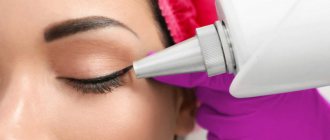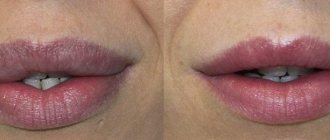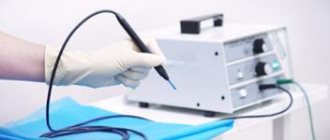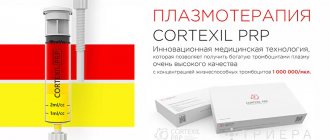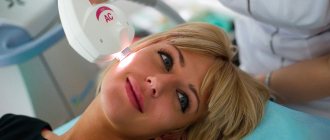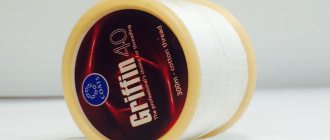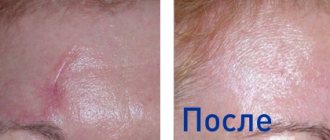Since the advent of the first civilizations, people began to apply drawings to their bodies. Initially these were ritual ceremonies. For example, they were common among Indian tribes. Now times are different, they no longer try to decipher the patterns on the body, but perceive them as part of the image. It happens that you no longer like the previously applied body painting. This can happen for several reasons: bad paint, an inexperienced artist, or the sketch itself. However, now there are safe and civilized ways to remove drawings on the body. In this article we will look at how to remove a tattoo, features of the session and what to expect from it.
History and development of the method
A laser is a beam of light that is amplified by stimulated radiation. The use of this technology in the field of tattoo removal began in the 60s of the twentieth century, when it was proposed to be used for these purposes by the US physicist Theodore Maiman. Until 1965, a ruby laser was used. Developments such as a yttrium aluminum garnet (neodymium) laser, an argon laser, and later a carbon dioxide laser were also introduced. Unfortunately, this method was not without its drawbacks: most often, scars and cicatrices remained at the site of removal.
Note! Over the years, the techniques have been improved, and today they are widely used in cosmetology practice.
Today this method is actively used
The next significant step in the development of laser technology came in 1983, when the theory of selective photothermolysis, or SPT, appeared. It was a breakthrough - scientists and doctors were able to figure out exactly how the laser affects the skin, and the first laser systems were designed for use in cosmetology.
Use of laser technology today
In cosmetology, laser exposure is divided into two types.
- Ablative effect. In this case, a kind of “erasing” of the upper layer of the epidermis occurs, on which an unwanted pattern is applied. In order to understand the technology, you can consider the example of a carbon laser: a directed beam of light heats water in tissues, and then causes the effect of its evaporation in a short time, simultaneously with the elimination of epithelial particles due to protein denaturation. Thulium and erbium lasers have the same effect - their beams are absorbed by liquid structures many times more strongly.
Ablative effect - Selective laser action: damages formations located inside or under the skin. In this case, no damage is caused to the skin itself. To perform the procedure in this way, a special laser with certain parameters of wavelength and exposure mode is required. Laser light is absorbed by dyed fabrics, destruction and discoloration occurs due to the photothermolytic effect. Undyed fabrics remain intact. Wavelengths of a certain length are selected for each color of paint used when applying the tattoo. After the procedure, laser-damaged cells and dyes that have undergone decay are eliminated independently through the lymphatic system and exfoliation of skin particles in about a month.
Selective laser action
In general, complete removal of a tattoo will require several procedures, the total period from a month to a year - the duration depends on the depth of the ink and the amount of work.
Note! Usually, the second type of exposure does not leave any traces on the skin - the wave impulse is too small to cause severe damage to the skin.
How many sessions are needed?
In 1 session, it is impossible to completely remove a tattoo from an arm or other part of the body, unless we are talking about a small, loosely packed, old picture.
The number of procedures can be up to 20. The minimum number is 2 procedures. During the preliminary consultation, the specialist determines the exact number of sessions, points out the nuances of protecting the skin area after ink removal, etc. Taken into account:
- Skin type, color;
- Area, age of tattoo;
- Picture color;
- Ink insertion depth.
It is easier to blend black designs, since light waves of any length are well absorbed by dark paint.
Masters do not recommend visiting ponds, baths/saunas, taking a bath (it is better to replace it with a short shower), or disturbing the area by touching or scratching between sessions for 14 days.
How is the procedure done?
The very essence of applying a tattoo is that the pigment (ink, dye) is applied not to the surface, but directly inside the skin cells, as a result of which clusters of microscopic drops of the dye are formed.
Note! Previously, tattoos were removed using very traumatic methods, such as surgical excision of the skin, scraping - all this led to the formation of large, ugly scars. In the mid-twentieth century, lasers began to be used, this technology was improved until by the 90s it became the most popular in this field.
Previously, tattoos were removed by excision of the skin
Factors influencing the result of work.
- Characteristics of a tattoo . These include the composition of the pigment, the size and location of the pattern, the depth of the dyes, the tool used for application and the condition of the skin (presence of scars).
- Skin type . The pigmentation itself is important – whether the skin is dark or light, and the health of the dermis. All this is important for the correct selection of the operating mode of the laser device.
- Laser characteristics . Such details of the laser operation as the wavelength and duration of the incoming pulse are taken into account. In order to eliminate all pigment particles and not cause a traumatic effect on the skin, it is necessary to direct laser energy of a suitable wavelength - this is not always easy, some shades are quite problematic to remove, but it is easiest to work with black pigment.
The effectiveness of removal depends on several factors
The QS (Q Switch) laser has been adopted as the generally accepted standard for laser removal of patterns on the skin. It has the ability to select the required wavelength, taking into account the color of the skin and the pigments used, as well as the corresponding duration of the pulse. Typically, getting rid of a tattoo using such a laser requires several sessions, each of which is carried out once a month.
Q switch laser
What is the essence of the procedure
Humanity has been decorating its body with drawings since ancient times.
Tattooing, unlike painting, is an accumulation of dye (ink pigment) inside skin cells. It forms tiny droplets in them measuring 2–400 nanometers (1 nanometer = 1 10−9 meters). The droplets themselves in the cell are packed into larger spheres of 0.5–4 micrometers (1 micrometer = 1 10−6 meters). Once upon a time, tattoos could only be removed by traumatic methods: excision, that is, surgical removal; dermabrasion - literally scraping off the skin. Such procedures often resulted in scarring. In the sixties of the last century, lasers began to be used in medicine, and then laser tattoo removal began to be practiced. And in the nineties this method became the most popular.
The mechanism of tattoo lightening under the influence of a laser has not yet been studied in detail. Laser-Tissue Interaction in Tattoo Removal by Q-Switched Lasers is believed to mean that the laser beam carries energy that is absorbed by the dye particles. They heat up and disintegrate. In this case, the cell containing the foreign pigment boils from the inside and is destroyed. Next, the “debris” and the dye are captured by macrophages of the immune system - shapeless cells capable of absorbing foreign substances - and are removed from the skin with a lymph flow.
Contraindications to the procedure
A general list of conditions in which tattoo removal is contraindicated:
- any diseases of the cardiovascular system;
- mental pathologies;
- skin diseases, dermatitis, eczema, etc.;
- pregnancy and breastfeeding;
- individual intolerance.
In order to remove a tattoo, it will take quite a lot of time and several sessions with a cosmetologist. Typically, one medium-sized drawing requires about 7-8 procedures (each of them is carried out approximately once a month).
The process will be long and very painstaking; it will require enough patience and resources to complete it. It is recommended to contact highly qualified specialists who work on modern equipment in advance in order to avoid serious problems later.
Removing a tattoo with a laser is not a quick process
During the procedure, you may notice a fading of the pattern, but at first this is only a temporary effect that soon disappears. After the first sessions, the color saturation will gradually return - you should be prepared for this.
Note! The process of removing drawings can be quite painful; in order to avoid this and make the procedure more comfortable, local anesthesia and mild sedatives are used.
An installation with a cooling effect through cooled air is also usually used - this method of reducing pain began to be used relatively recently, and has already received the first positive reviews. Ice compresses and local anesthetic creams can also be used. In some cases, injections of an anesthetic drug (such as lidocaine) are used directly into the treated area. In addition, modern laser systems allow manipulations to be carried out with greater comfort.
The skin is numbed so that the patient does not experience discomfort.
Contraindications
Before beginning removal, doctors must know about the patient's medical conditions. A hassle-free procedure is possible if skin diseases, cardiovascular and mental illnesses are excluded. A serious obstacle can be the presence of allergies of various types - when exposed to a laser, there is a risk of complications. The doctor should also be informed about the medications the patient was taking and about possible blood diseases or hepatitis. Therefore, a preliminary examination should be a mandatory step before going to the clinic.
Selection of specialist and clinic
Before going to a clinic for tattoo removal, you will need to find out whether the specialists working there have a license to perform these manipulations; read reviews from other clients. A plus will be the availability of a doctor’s portfolio with photographs before and after tattoo removal in the public domain. Basic list of questions to ask during consultation.
- What equipment is used during the session (it is better if the latest generation laser is used, which, unfortunately, not all clinics can afford).
- Anesthesia techniques involved.
- What safety guarantees are given during the procedure: the doctor and the patient must wear safety glasses, a separate room is allocated for the laser, and the cosmetologist must have a special permit to work with this type of equipment.
- Ask for a list of possible side effects from the procedure, as well as any guarantees provided.
It is important to know everything about the procedure
Note! Specialists from a trustworthy clinic should not have any difficulty answering these questions, and the lack of adequate comments can be alarming.
Possible side effects and complications after the procedure
- Swelling, redness, itching, soreness, and minor bleeding may appear.
- Sometimes tattoo ink changes color after the procedure.
- The medical literature describes isolated cases of Intraoperative Localized Urticarial Reaction During Q-switched Nd:YAG Laser Tattoo Removal allergic reactions that appear after laser tattoo removal.
- If an infection occurs, you may need to take antibacterial drugs and local treatment.
Most side effects go away on their own. But, alas, this is not always the case Laser and Light Source Treatments for the Skin. After the procedure, special skin care may be required.
Other Tattoo Removal Methods
There are also other methods of drawing pictures without using laser technology.
- Skin resurfacing: To perform this procedure, you will need to scrape the top layer of skin using a special diamond-coated device. This is a rather dangerous procedure, since there is a high risk of infection; you will need to wear a bandage for a long time and treat it with antiseptics. Often causes welts and scars. Usually costs much less than other methods.
- Surgical removal. The most traumatic method of tattoo removal involves cutting out part of the skin with the applied design. Scars cannot be avoided here.
- Use of chemicals. The pattern is removed using bleaching ointments and piercing it with a special needle. This is a long procedure that requires a high level of professionalism; not every cosmetologist undertakes to carry it out.
- It is also possible to treat the tattoo with liquid nitrogen - the upper layer of the epidermis is subjected to necrosis and is removed. This is a very painful and lengthy method, but cheap.
- The electrocoagulation method works in a similar way, in which the tattoo is exposed to high-frequency currents. Severe burns and scars may occur.
There are other tattoo removal methods, but they are not considered as effective.
In this age of widespread dissemination of information, you can easily find reviews from real people who have experienced tattoo removal procedures in one way or another, so it is better to familiarize yourself with them in advance.
Note! There is no need to save money on this procedure.
How to remove tattoos at home?
Not everyone is satisfied with the possibility of salon removal of unwanted tattoos; many prefer to do this work on their own at home. This practice cannot be called safe, given that many techniques are now available that do not require resorting to such methods.
All methods that you can use to remove tattoos at home are truly dangerous, so the methods below are provided for informational purposes only. We consider it necessary to warn that such methods are not only very painful, but are often either completely ineffective or leave serious crippling scars and can have disastrous consequences for health.
You can even remove a tattoo at home, but it is quite dangerous
Potassium permanganate compresses in the picture lead to the formation of ulcers and burns, which are subsequently difficult to treat. Alkali gives the same effect.
Using iodine is a lengthy, less dangerous, but practically ineffective process that can take several months.
Celandine juice is a toxic substance that can cause severe burns and allergic reactions.
When using salt, severe pain occurs, making the procedure almost unbearable.
Even with the best outcome of using such methods, serious damage, scars and scars will remain on the skin. In the worst case, you can get burns, poisoning, and infection entering the wound, leading to blood poisoning.
Most likely, after removing the tattoo yourself, scars will remain on the skin
Note! Based on this, we can conclude that the only effective way that does not cause harm to health is the help of a qualified cosmetologist.
Is it possible to completely remove a tattoo with a laser?
Whether a tattoo can be completely removed with a laser depends on the type of device chosen and the depth of the ink. The cosmetologist always warns that complete removal of the coloring pigment can be achieved faster if you follow the care rules. Typically, the area where the tattoo was located does not differ in color from the surrounding skin.
Poor ink removal leads to the appearance of pigment spots, blisters, crusts, blood, scars, and incomplete destruction of dyes in the skin.
Basic myths about laser tattoo removal
Myth 1. Any center that has a laser machine is suitable for tattoo removal.
There are indeed a very large number of such centers, but the quality of the services provided does not always meet the required level. Before carrying out the procedure, a detailed consultation with a dermatologist is required, who should ideally conduct the session. A doctor's monitoring of the process will help to promptly prevent side effects such as bleeding, infection or scarring.
It is better to contact clinics that have a sufficient number of positive reviews about this procedure.
Myth 2. Using a laser you can quickly and easily get rid of a boring pattern
A laser is not an eraser, and its use does not involve a quick tattoo removal process. There are patients whose full cycle of sessions to remove unwanted patterns on the body lasted more than a year or even two, with sessions performed once every 2-3 months. This procedure is incomparable with simpler manipulations, such as removing unwanted hair. When using a laser, pigment particles in the skin are eliminated and then removed by the immune system.
Note! After the session, a long and complex process of regeneration and recovery is required, accompanied by bleeding, pain and swelling.
It will not be possible to quickly remove a tattoo with a laser, especially if it is of an impressive size.
Myth 3. This is a painless process.
The absence of pain and discomfort can only occur if local anesthesia methods are used. Moreover, if the size of the tattoo is large, then a lot of time is spent. Only a doctor can inject lidocaine or another active anesthetic; if the procedure is performed by a person without medical education, then this method of pain relief is not used. Removing small tattoos can also be very unpleasant, since the pain depends not only on the size, but also on the color of the pigment. The only difference will be that when removing small tattoos, the process will take significantly less time.
Discomfort may be felt during the process if no anesthesia is used.
Myth 4. Laser tattoo removal is safe in any case.
Unfortunately, not everyone endures this procedure without loss. This can be a rather difficult process for patients with darker skin tones (this is due to the way the laser itself works, which can “target” not only the pigment in the tattoo, but also the melanin contained in the skin).
Note! Therefore, we can say that the darker the patient’s skin tone, the more difficult it is to use a laser in the procedure, and the much higher the risk of unwanted pigmentation and burn injuries.
People with dark or dark skin will have a more difficult time removing a tattoo.
Myth 5. Tattoo removal is very easy
Skin patterns are completely different. For example, the easiest way to get rid of black pigment is with green and blue colors, but doing something with a yellow, purple or white tint is almost impossible. Laser waves of different lengths are used to process their pigment colors. The complexity of the approach can be with
Video of laser tattoo removal in Tallinn
The video clearly shows the lightening of the color of the tattoo directly under the laser beam. This effect is called the “frost effect”. This change is not the final result of removal, but the reaction of the pigment and surrounding skin to the laser beam.
Immediately after the laser procedure, we can see slight swelling and elevation of pigmented skin above the surrounding tissue. This effect is temporary and passes quickly without causing any inconvenience. The technique for removing thin and large tattoos is not the same and is determined by the doctor.
After 5 weeks, we see a significant change in the saturation of the tattoo in this patient. Complete removal will require another 1-2 procedures.
Photo - tattoo after 4 procedures
It would be a mistake to assume that the same removal methods should be used for absolutely all tattoos. This is due to both the nature of the pigmentation and its color, the depth of occurrence, the dyes used, as well as the gender, age, and health characteristics of the patient himself. Only an experienced doctor, during a face-to-face consultation when examining a tattoo and after collecting an anamnesis, can determine which method or combination of methods is indicated for the highest quality pigment removal in a particular patient.
- To remove tattoos and foreign pigment (for example, removal of lip tattoo or eyebrow tattoo), Vitaclinika (Tallinn, Estonia) has introduced several methods (or combinations thereof): High-power Q-switched medical laser - the most commonly used method in medical institutions for laser tattoo removal . A powerful and very short nanopulse of various wavelengths allows you to work with pigment of any color and almost any depth without damaging the skin.
- Medical IPL Lumenis M22 is a particularly gentle technique for removing natural pigmentation, freckles, age spots, lentigines, nevi located in particularly delicate places.
- Microinjection techniques for removing pigmentation.
- Surgical removal of pigmentation with the application of a cosmetic suture. The method is used in very rare cases.
In the vast majority of cases, for complete removal of tattoos and pigment, methods 1 and 2 are sufficient, and methods 3 and 4 remain in the Vitaclinic’s arsenal for rare and special cases.
Laser tattoo removal works on the principle of selective photothermolysis. As a result of exposure to a precise laser pulse of a strictly defined power and wavelength, pigment particles in the thickness of the skin are briefly heated (for a few nanoseconds) and as a result are destroyed into fine “dust”. This dust consists of very small particles of pigment. Their small size allows the cells of the body's lymphatic system to easily capture them and remove them from the skin with the natural flow of lymph.
From this video it becomes clear why the intervals between laser tattoo removal procedures should be quite long.
In one procedure, not all pigment is destroyed in this way, but part of it. After about 1-2 months, the procedure is repeated again. To completely remove tattoos, 6 or more procedures are enough. To significantly lighten a tattoo, 1-2 procedures are enough.
Before the procedure, during the consultation, the doctor explains in detail all the technical aspects, gives the necessary recommendations, and answers the patient’s questions. At Vitaclinika, tattoo removal takes place only in equipped medical premises. Before the procedure, the doctor examines the removal area. If necessary and according to indications, an anesthetic cream or injection anesthesia is used, but in the vast majority of cases additional anesthesia is not required. According to our patients, “getting a tattoo is more painful than removing it.” For tattoo removal, Vitaclinika uses a powerful Q-switched laser with a spot diameter of up to 10mm and a pulsation frequency of up to 10Hz, which allows you to remove tattoos of almost any size very quickly and efficiently (without gaps).
Video of laser tattoo removal procedure in Tallinn Video of laser tattoo removal procedure in Tallinn
The procedure is carried out under hardware air-cold heat removal, which increases comfort during the removal itself, and also significantly reduces the risks of any negative complications. For this purpose, the Vitaclinic is equipped with special equipment that works synchronously with the laser. On average, the procedure takes from 10 to 30 seconds.
After the procedure, cream is applied to the treated area and a sterile bandage is applied. As a result of the use of medical-grade equipment, after a tattoo removal procedure at Vitaclinik, patients do not experience severe swelling, redness, blistering or inflammation of the skin.
Photo - immediately after the removal procedure, the tattoo briefly brightens, then the original color returns and the final result of the procedure gradually appears over 3 weeks
Consequences of intervention
Up to two days after the tattoo removal procedure, pain and discomfort may be observed - this is a normal reaction. You can relieve symptoms by using a cold compress with ice. Also after the session you may experience slight swelling, changes in pigmentation and bleeding. The skin may become red. After about 1-2 days, the symptoms stop, and a crust appears at the tattoo site, which disappears after two weeks.
Note! If you have to deal with prolonged pain, severe redness or swelling that does not subside, you must contact your surgeon to prevent possible complications.
Some discomfort may be felt after the procedure
The process of removing pigmentation can continue for up to two months; the tattoo will gradually fade and disappear. The time spent on this process depends on the individual characteristics of the organism.
What could be the consequences?
As a rule, such a laser procedure is tolerated by the skin quite well - in most cases, after the session, slight swelling and redness may occur, which disappear from several hours to a day. However, everyone’s skin reaction is individual and, perhaps, in some cases the skin will need a little more care - no trauma, overheating, hypothermia, scratching, etc.
With careful treatment, healing will be quick and easy and all procedures will be carried out as planned.
Number of procedures and waiting time for results
Depending on the characteristics of the pigment and the size of the tattoo, you may need from two to twelve procedures, based on the results of which you can evaluate the result. Be sure to stay in touch with your doctor and let him know about any alarming changes in your condition. Don't hesitate to ask if you have any questions regarding your well-being.
Typically, 2 to 12 procedures are required
What complications can you encounter?
In most cases, the procedure is easy and without complications. If there are any risks in your individual case, your doctor will explain them at your first consultation.
List of complications that may occur:
- hematomas, accumulations of fluids during pigment removal;
- infection;
- bleeding;
- problems with sensitivity in the treated area;
- the appearance of scars;
- allergy;
- no primary effect.
Complications are rare, but they are still possible
In addition, there is a possibility of encountering specific changes that are associated specifically with tattoo removal:
- problems with pigmentation in the treatment area;
- changes in the structure of the skin;
- in rare cases - darkening of the pattern.
Note! Risks can be minimized by strictly following the rules and advice given by the surgeon after completion of the procedure.
Reviews
Marina, Vladimir
“I had my “youth mistake” removed - a tattoo on my neck - using a neodymium laser. I can’t say that it hurt a lot, but I felt discomfort. This is understandable - the skin on the neck is quite delicate. But the main thing for me was to finally remove the tattoo, because it was really ruining my life. It took me 10 sessions because the tattoo itself was quite large. But the cosmetologist told me that the pigment was not deep, otherwise even more sessions would have been required. Gradually the tattoo became lighter, and now it is completely gone. I'm very happy".
Patients confirm that laser tattoo removal is truly effective
Ivan, Moscow
“I got a tattoo a couple of years ago, but now I just don’t like it anymore. I decided to remove it, fortunately, now it is possible to do it with a laser. I have a high pain threshold, I did not experience any discomfort. Tattoo removed in 8 sessions. The skin is now clean, there are no scars left. All good".
How does laser work on tattoos and skin?
The laser beam works directly with the pigment. Outbreaks destroy it and it is safely eliminated by the body itself through the lymphatic system. It is important that the laser does not affect the surrounding skin and does not damage it. Its function is to contact the pigment, so you should not be afraid that the laser may harm you.
Due to the fact that there is no significant impact on the skin itself, the laser tattoo removal procedure can be carried out when it is convenient for you. For example, it will not limit your social activity in any way if you have scheduled a meeting the next day after the session, and it simply will not take away your precious hours - one tattoo treatment procedure takes only 5 to 20 minutes.
Photos before and after
Photos before and after a course of laser tattoo removal procedures No. 1
Photos before and after a course of laser tattoo removal procedures No. 2
Photos before and after a course of laser tattoo removal procedures No. 3
What can you expect after laser tattoo removal?
People often have questions about complications and possible negative consequences after removing drawings. In reality, the consequences of laser tattoo removal can be as follows:
- If safety precautions and rules for using the equipment are not followed, burns may result.
- Manifestation of skin reactions - redness, swelling or depigmentation.
- The appearance of a hematoma under the skin.
- Hair loss in the treated area.
- Increasing the brightness of the picture.
Apart from burns, other complications are rare, and all skin and vascular reactions disappear quickly with appropriate therapy. To prevent complications, the time between sessions should be optimal (28 days). It is also recommended not to sunbathe for 2 weeks, use sunscreen when going outside, and lead a healthy lifestyle (without playing sports, drinking alcohol, or strenuous physical activity).
